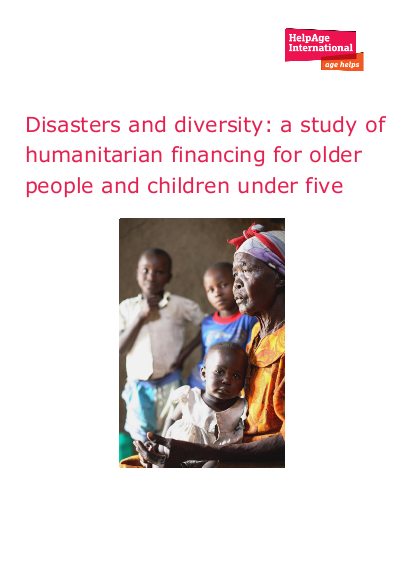
Different people have distinct capacities, vulnerabilities and needs. Consequently, humanitarian crises affect different groups in different ways. It is crucial, therefore, that humanitarian programming is based on a clear understanding of the variant impacts of a crisis on the population. This study quantifies, by looking at funding as a proxy indicator, the degree to which the specific needs of two groups – older people and children under five – are reflected in humanitarian programming.
This report is the most recent chapter of a series of studies published by HelpAge International investigating the link between diversity – the specific needs of different population groups – and humanitarian programming – as captured in strategic planning and resource mobilisation mechanisms. A report published in 2011 in partnership with Handicap International illustrated the degree to which the humanitarian system overlooked the needs of older people and people with disabilities.1 The study found that just 0.78 per cent of projects submitted to the 2010 and 2011 Consolidated Appeals Process (CAPs) included at least one activity targeting older people (0.3 per cent were funded), while 1.6 per cent of projects included targeted activities for people with disability (0.7 per cent were funded). Where relevant, this study uses the 2011 report as a baseline to identify trends.
The present study adds to the growing body of evidence pointing to a limited connection between diversity and programming. Given the emphasis traditionally put on assistance to children, it was expected that their specific needs would be significantly more represented in projects and better covered by funding. Surprisingly, this was not the case. While people with disability and children under five are both marginally better represented than older people in humanitarian programming, the overall picture for inclusion of diversity issues is poor. The number of projects submitted and the overall level of funding remain very low. Within this small funding envelope, however, and more in line with expectations, projects with activities targeting children under five account for a greater proportion of available resources than projects targeting older people.